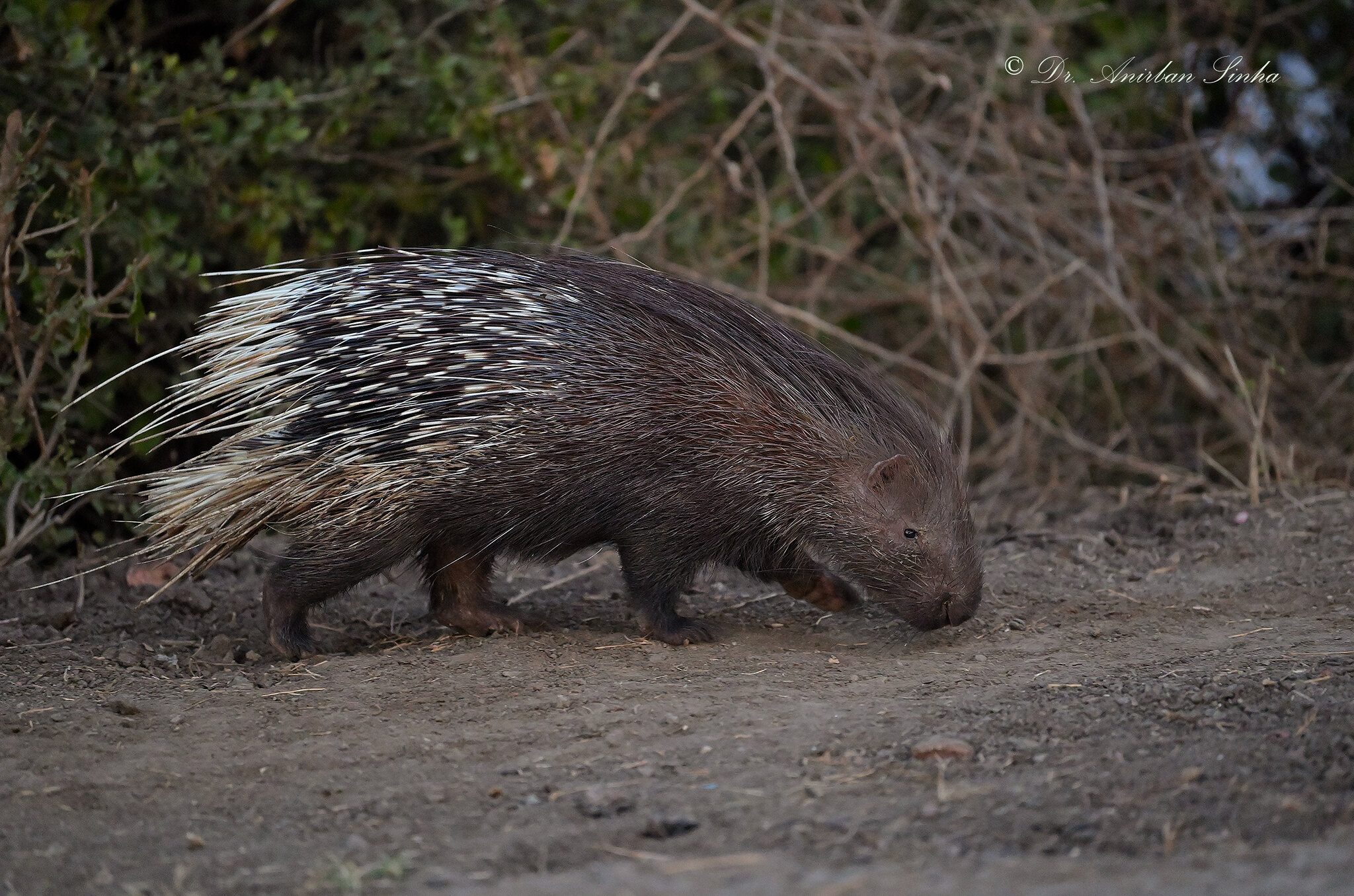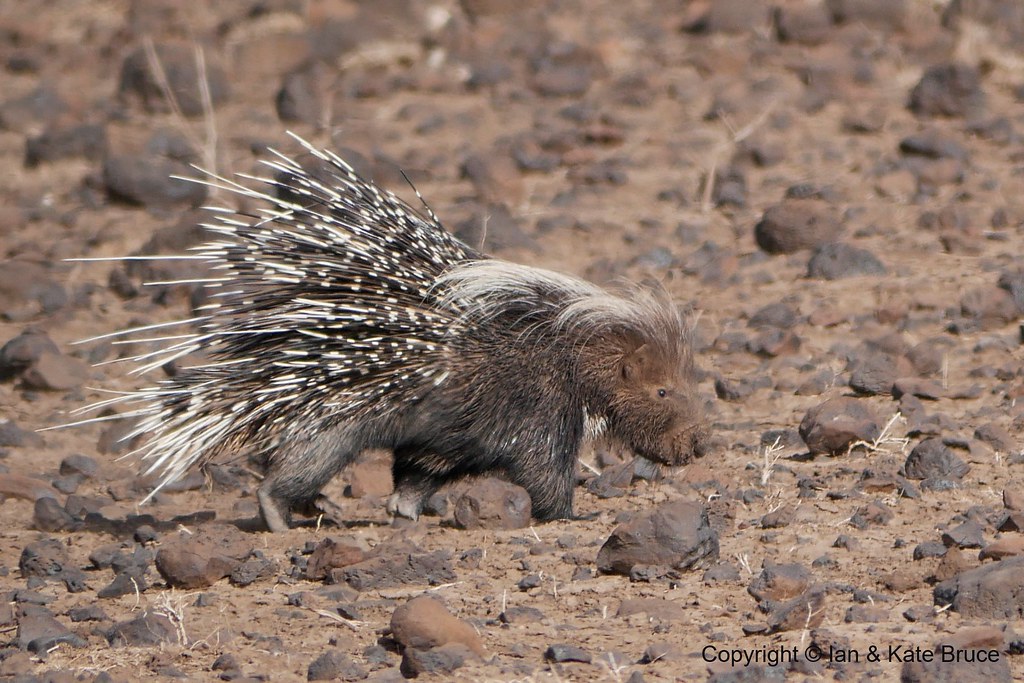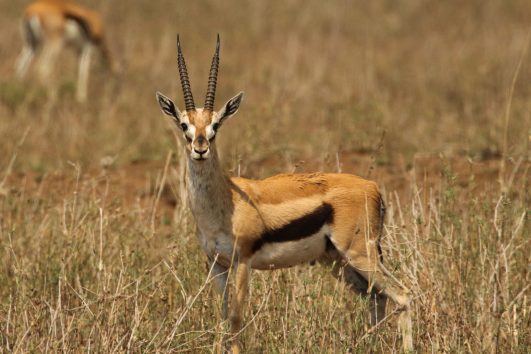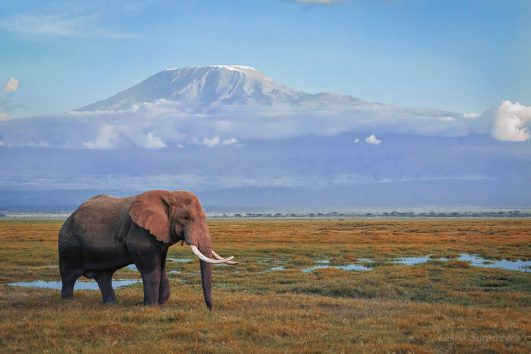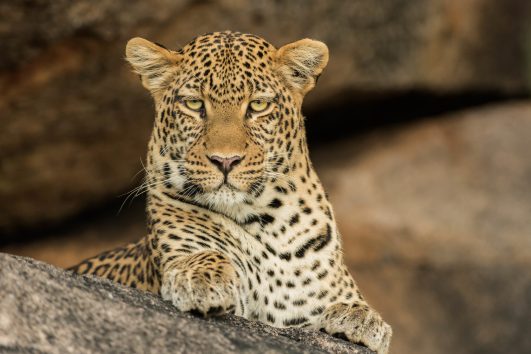The crested porcupine popularly known as African Crested Porcupine, native to Italy, North Africa, and sub-Saharan Africa, is one of the largest rodents in the world. Known for its formidable defence mechanism, the porcupine’s quills, it’s also famous for its role in the ecosystem, particularly in soil aeration through digging. This porcupine can be spotted around Mount Kilimanjaro and Mount Kenya.
The term “porcupine” translates to “quill pig” in Latin, yet these creatures are actually large rodents, unrelated to pigs. Among African rodents, porcupines are the largest and heaviest. Their head is somewhat round and dome-shaped, featuring a blunt snout, small eyes, and ears. Their limbs are short but robust, each ending in five toes with strong claws.
Their most notable feature is their array of quills. These quills vary in length across the body, from 2.5 to 30.5 cm (1 to 12 inches). Typically, the quills lie flat, but when threatened, they can be raised and spread out. The tips of these quills have tiny scales that act like fishhooks, embedding in the skin and making them hard to remove. If a quill is lost, it is replaced by a new one growing in.
Porcupines are covered with dark brown or black bristles that are quite coarse. The crested porcupine gets its name from the distinctive quills along its head, neck, and back, which can be raised into a crest. Additionally, there are longer, sturdier quills, about 35 cm (14 inches) long, on the sides and back, primarily used for defence. These quills often have alternating light and dark bands and are not as firmly attached. The porcupine’s tail is short and ends in rattle quills. These rattle quills are hollow at the tips and thin-walled, producing a hissing rattle when vibrated.
Physical Appearance of African Crested Porcupine:
- Size: Crested porcupines can grow to lengths of 60-83 cm (24-33 inches) with a tail of about 12-15 cm (4.7-5.9 inches). They can weigh between 13 to 30 kg (29 to 66 lbs).
- Quills: Their most distinctive feature is the array of quills or spines, which can be up to 30 cm (12 inches) long. These quills are hollow and have microscopic barbs at the tips, making them difficult to remove once embedded.
- Fur: Underneath the quills, they have coarse black and white fur, with a crest of longer quills on their head that can be raised when threatened.
- Teeth: They have large, ever-growing incisors, adapted for gnawing on roots, bark, and bones, which they chew to keep their teeth from overgrowing.
Adaptations:
- Defense: Their quills are a primary defense mechanism. When threatened, they can raise their quills, charge backward, or rattle them to deter predators. Contrary to popular belief, they cannot shoot their quills.
- Digging: Their strong limbs and claws are adapted for digging burrows, which they use for shelter and food storage. These burrows can be quite extensive.
- Diet: They are herbivorous, feeding on roots, bark, bulbs, and occasionally small invertebrates. Their digestive system is adapted to handle a diet high in cellulose.
- Senses: They have a good sense of smell and hearing, which helps in foraging and detecting predators.
Habitat:
- Range: Crested porcupines are found from Italy through North Africa to sub-Saharan Africa, excluding the Sahara Desert.
- Environment: They inhabit a variety of environments including forests, savannahs, grasslands, and rocky areas. They prefer areas with soft soil for digging.
- Burrows: They are burrowing animals, creating complex underground systems for protection from predators and the elements.
Behavior and Lifestyle:
- Nocturnal: Porcupines are primarily nocturnal, emerging at night to forage. During the day, they rest in their burrows.
- Social: While generally solitary, they can be found in small family groups. They communicate through vocalizations, including growls, hisses, and whines, and through scent marking.
- Reproduction: Females give birth to one to four young after a gestation period of about 112 days. The young are born with soft quills that harden within a few days.
Conservation Status: The crested porcupine is not currently considered endangered. However, they face threats from habitat loss due to agricultural expansion and human settlement, as well as from hunting for their meat, quills, and for traditional medicine.
Additional information
| Habitat | Kilimanjaro National Park, Mount Meru, Mount Kenya, Rwenzori |
|---|

